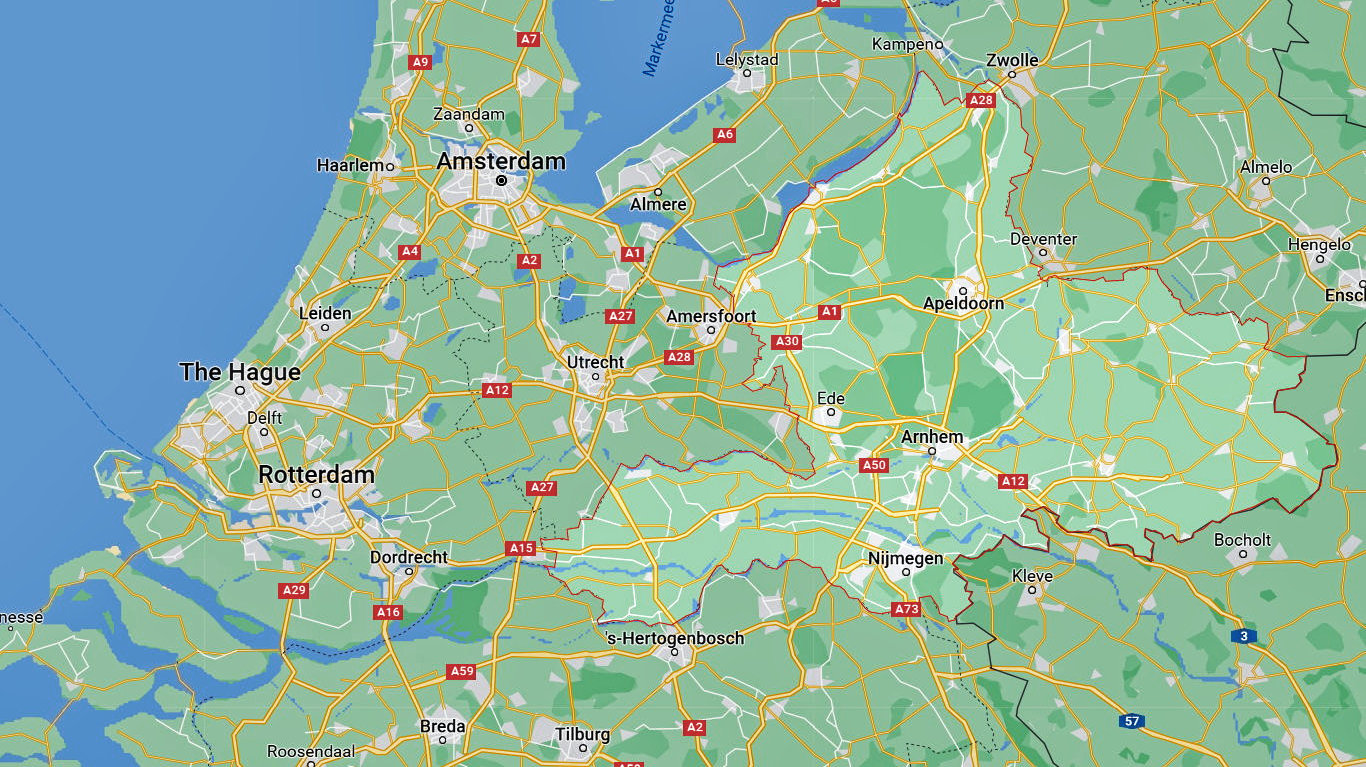
In the Saale glaciation, massive glaciers created large moraines
that still live on as hills and inundations in the Veluwe and Montferland landscape.
By 7500 BC, Mesolithic hunter-gatherers
had moved in from Denmark, to be replaced 2 millennia later by farmers from the Funnelbeaker culture who
left scores of burial mounds.
In Roman times Nijmegen was a garrison town at the Rhine River to keep the barbarian German tribes
at bay, and the town proudly claims to be the oldest Dutch city.
The devastating St. Lucia Flood of 1287 created
the Zuiderzee, after which cities along the IJssel River like Hattem and Zutphen had free access to the North Sea and soon
joined the Hanseatic League with its profitable maritime Nordic trade.
For many centuries the Duchy of Gelre played
an important role in Dutch history till in 1815 Gelderland became a province of the newly formed Kingdom of the Netherlands.
In 1944 the daring military Operation Market Garden proved that Arnhem was "a Bridge Too Far".
Gelderland thrives on tourism, with the Veluwe as hotspot. Here you can enjoy the landscape, visit the gardens of Palace het Loo, the Kroller-Muller museum and the iconic Jachthuis St Hubertus. You may even spot a wolf, as these predators have settled here since 2019, much to the chagrin of local deer, boar, mouflons and sheepherders.


